
As a landlocked country, Laos is like a “Lost Paradise” with dense primeval forests, mysterious underground caves, antique temples and friendly people, where everything is pristine and intoxicating. Here is a guide to some of the best places to visit in Laos.
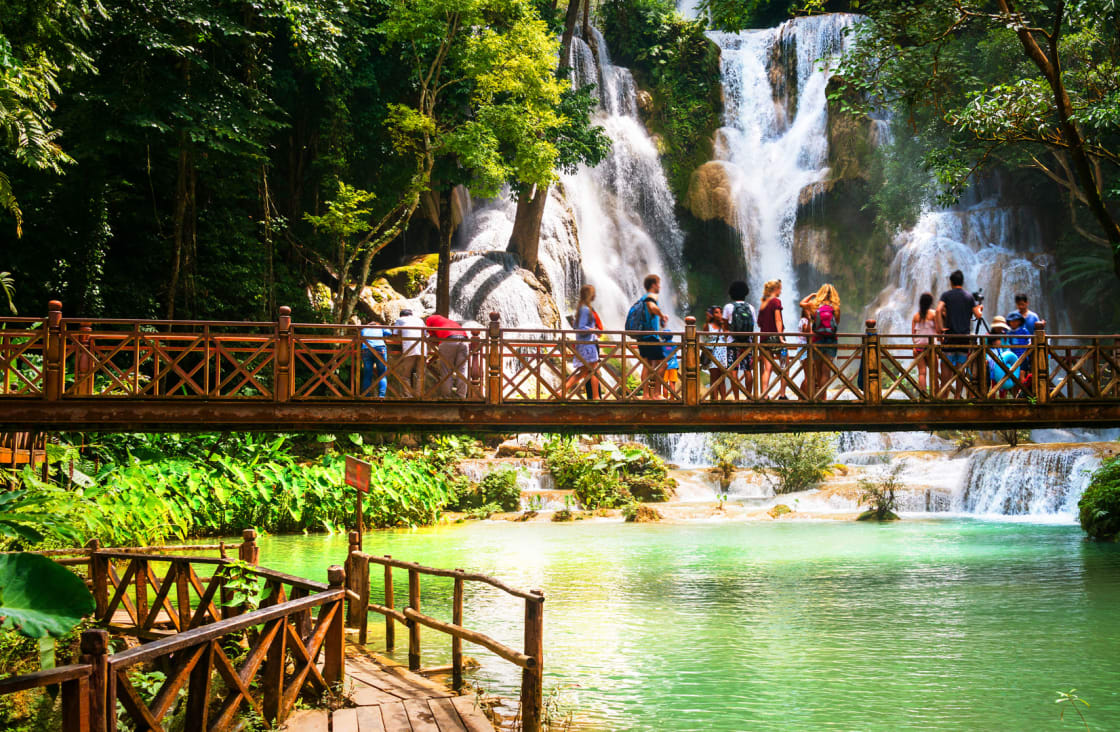
The Kuang Si Waterfall 20 miles south of Luang Prabang is quite possibly one of the most beautiful natural places to visit in Laos. The picturesque, multi-tiered waterfall tumbles over limestone rock formations into crystalline jade and turquoise-colored pools. The encroaching, wild jungle completes the picture and the feeling of being in an untouched oasis.
A trail ascends alongside the waterfalls to an idyllic second tier with a pristine swimming hole. This area is usually fairly private, save for thousands of butterflies. Laos may be a landlocked nation without beaches, but Kuang Si’s cool turquoise waters make up for it. Don’t dismiss it as “just another waterfall”.
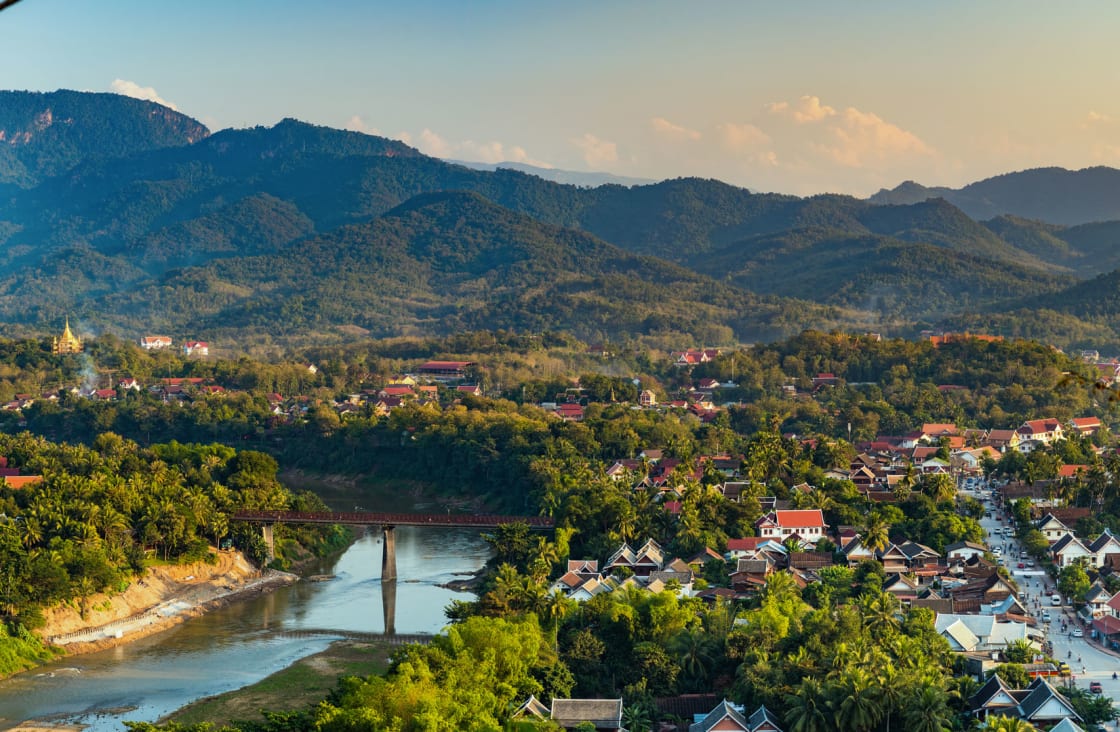
People refer to this activity as a leisure hike, but there is actually an exceptionally long staircase of 298 steps, taking you to a temple on the top of the hill. You will see Buddhas everywhere against the backdrop of stunning landscapes, and you will be rewarded with fabulous views of Luang Prabang and the Mekong River from the top. As always, mountaintop views are best seen at sunrise or sunset, although this walk is quieter during the daytime.
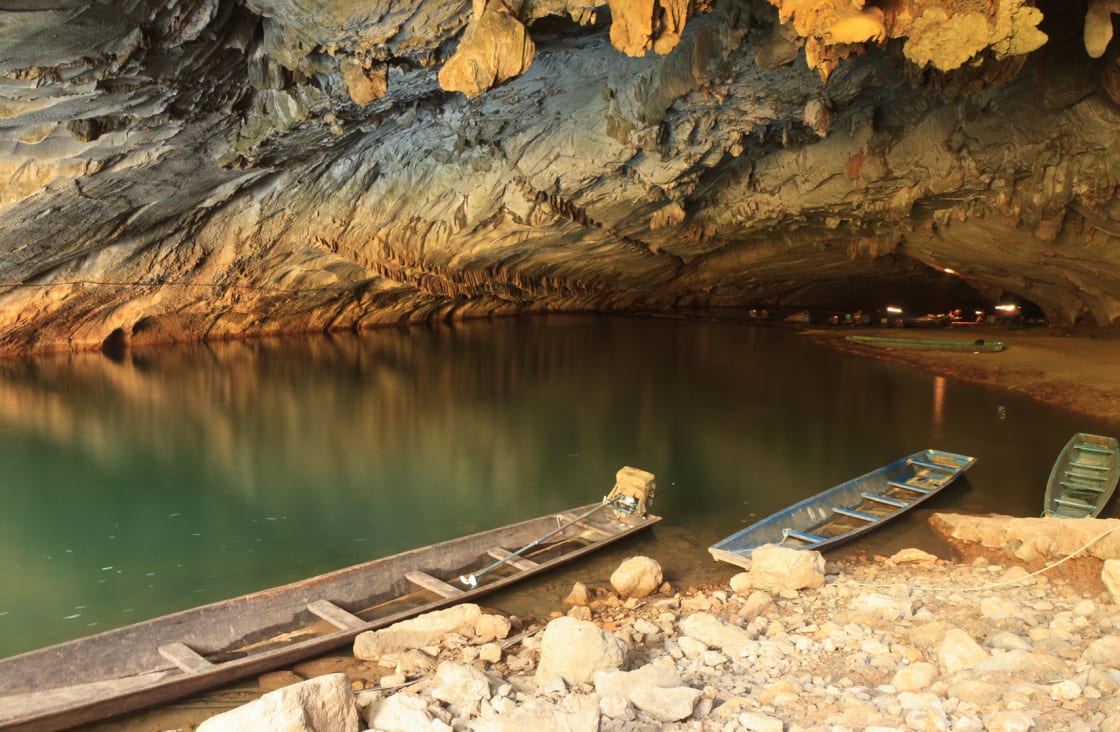
You can easily spend a few hours at any of the caves in Laos, but one that should be on the top of anyone’s list is Kong Lor, a karst limestone cave in Phu Hin Bun National Park, in Khammouane Province. The beauty of the cave and the surrounding mountains are completely unspoiled. Take a boat trip through the pitch-black cave by flashlight and explore its mysteries as you walk through lit passageways. Look out for spiders, bats and snakes! Once you are out the other side you can swim in the cool waters of the river.

At Si Phan Don, countless small islands are dotted in the Mekong River. In fact, the number of islands changes according to the water volume of the river during the rainy and dry seasons. You can move through the islands by boat, while appreciating the spectacular natural scenery, which is punctuated by dancing palm trees and a few houses on the riverbanks.
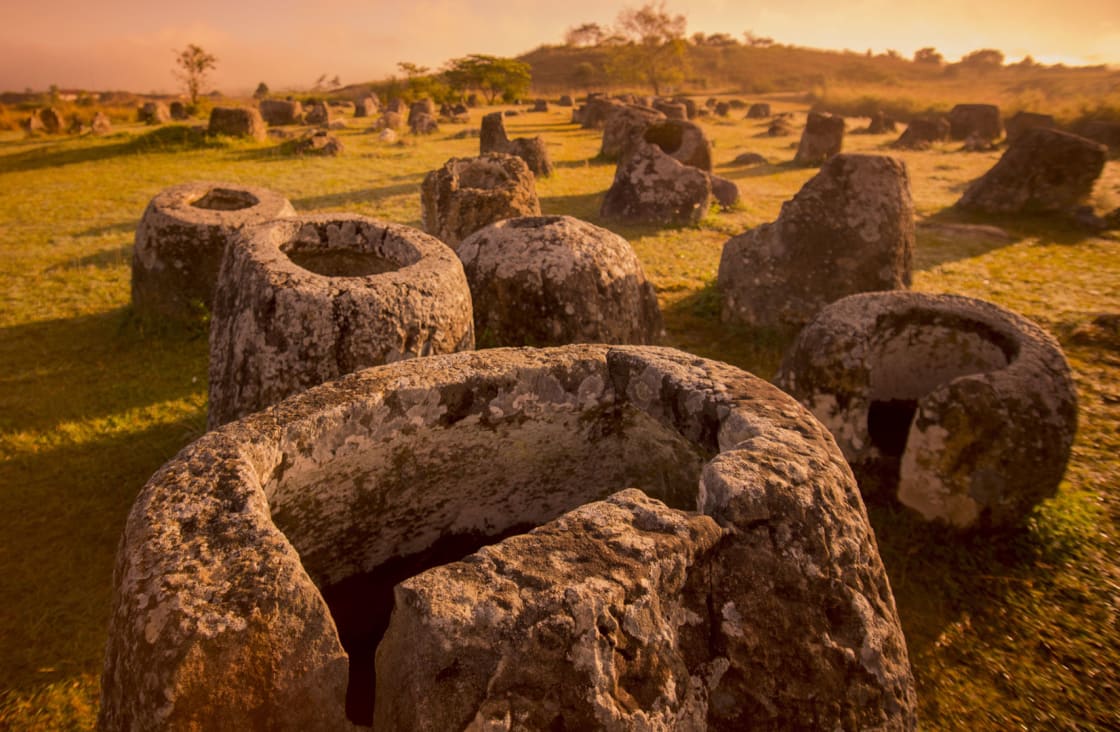
One of the most unique prehistoric sites in Southeast Asia, the Plain of Jars has over 90 sites with thousands of stone jars in various sizes. Located in the Xiangkhoang Plateau, each archaeological site has between one and 400 stone jars dating back to the Iron Age. The civilization that was responsible for the Plain of Jars remains a mystery among locals and archaeologists.
The jars were carved from both sandstone and granite; the tallest jar is nearly 12 feet high and some of them are thought to be over 2,000 years old. Locals believe the structures were made to brew and store rice wine or collect rainwater. One of the reasons why this is a popular place to visit is because the sites are considered safe from unexploded mines and bombs, but make sure you walk on the designated routes to be safe.
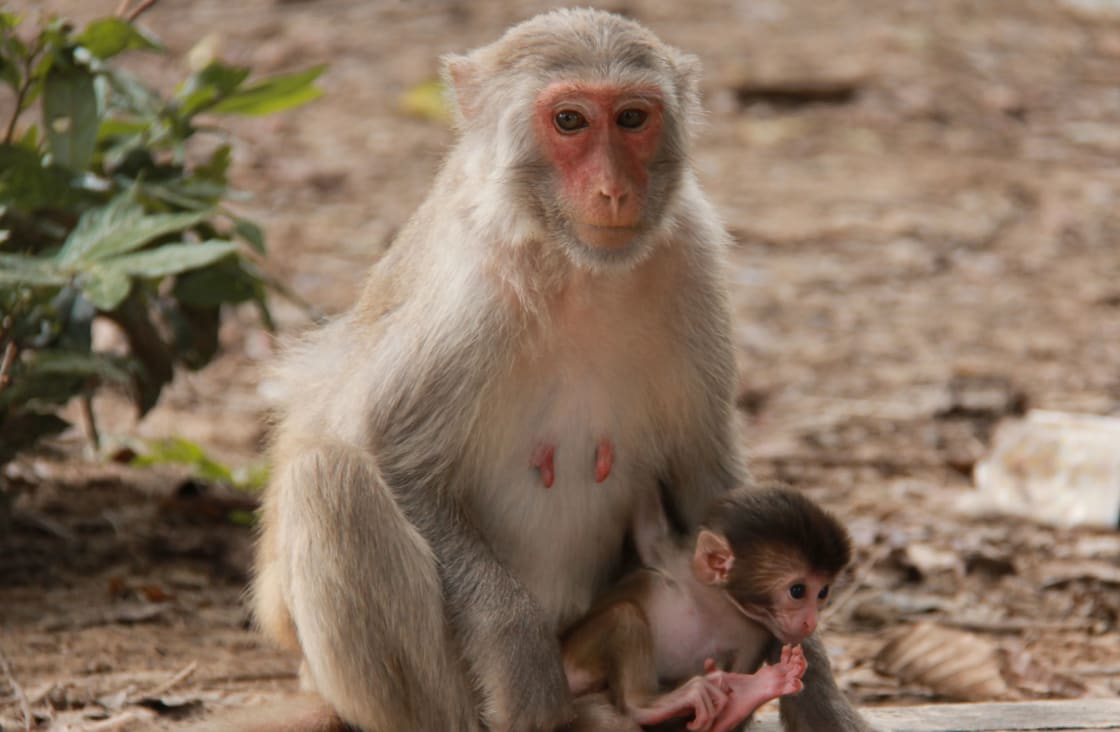
Dong Natad is a sacred, semi-evergreen forest within a provincial protected area 10 miles east of Savannakhet. It is home to two villages that have been coexisting with the forest for about 400 years, with the villagers gathering forest produce such as mushrooms, fruit, oils, honey, resins and insects. It’s possible to visit Dong Natad by bicycle, motorbike or tuk-tuk from Savannakhet.
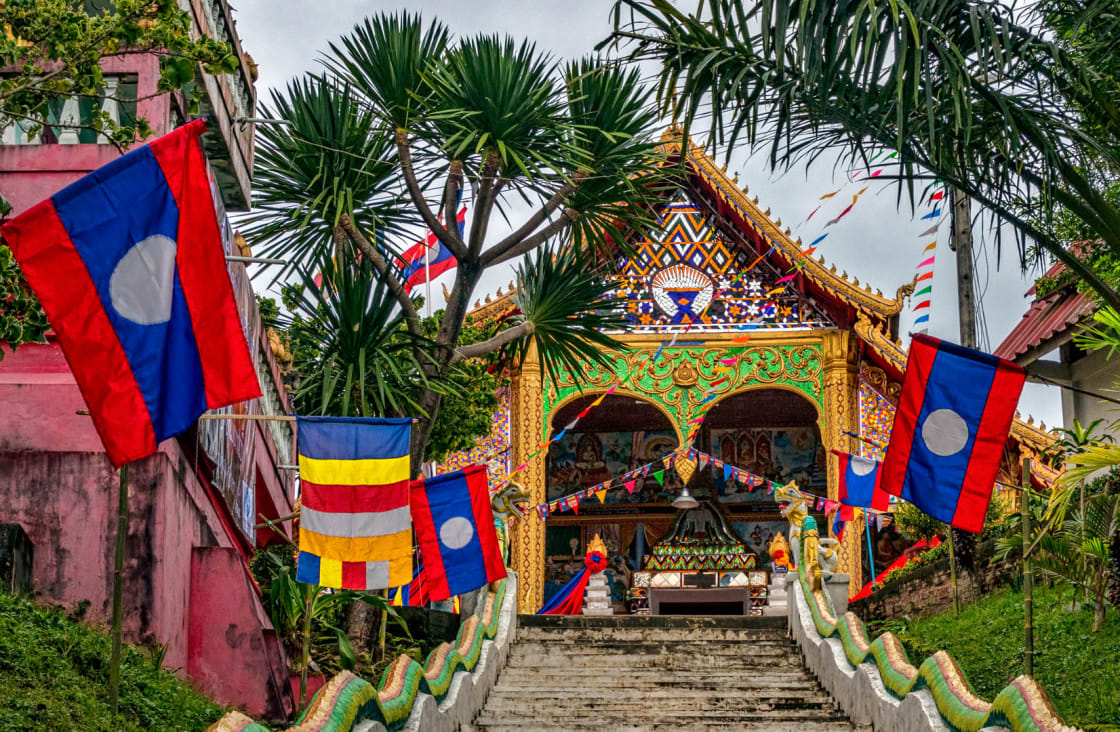
There are many mountains around Vang Vieng, which are perfect for hiking. The Pha Ngern viewpoint offers a truly jaw dropping vista. It is a 30-40-minute climb to the lower viewpoint at 2,100 feet, and the paths are easy to follow, with occasional red spray-painted arrows on the rocks, but they are steep in places. There are sporadic ropes to give you something to grab onto, but you should wear sensible walking shoes and take some water with you.
Once you reach the top there are several viewing platforms that provide incredible views of the surrounding limestone karsts and a patchwork of rice fields. There is a stall selling drinks at the viewpoint. If you have enough stamina, you can hike up for another 1700 feet to reach the highest viewpoint for an even better panorama, making it one of the most rewarding places to visit in Laos. The track consists of muddy terrain and rocks, and it can be slippery when it’s raining.
The Nam Xay Viewpoint is a short hike, but an intense steep one up to a 360-degree viewpoint of the surrounding area. In short, just a stunning view. An effort is clearly made to keep the trail clean and maintained, and it has railings all the way up. It will take you about 15-25 minutes, depending on your fitness level, to reach the top.
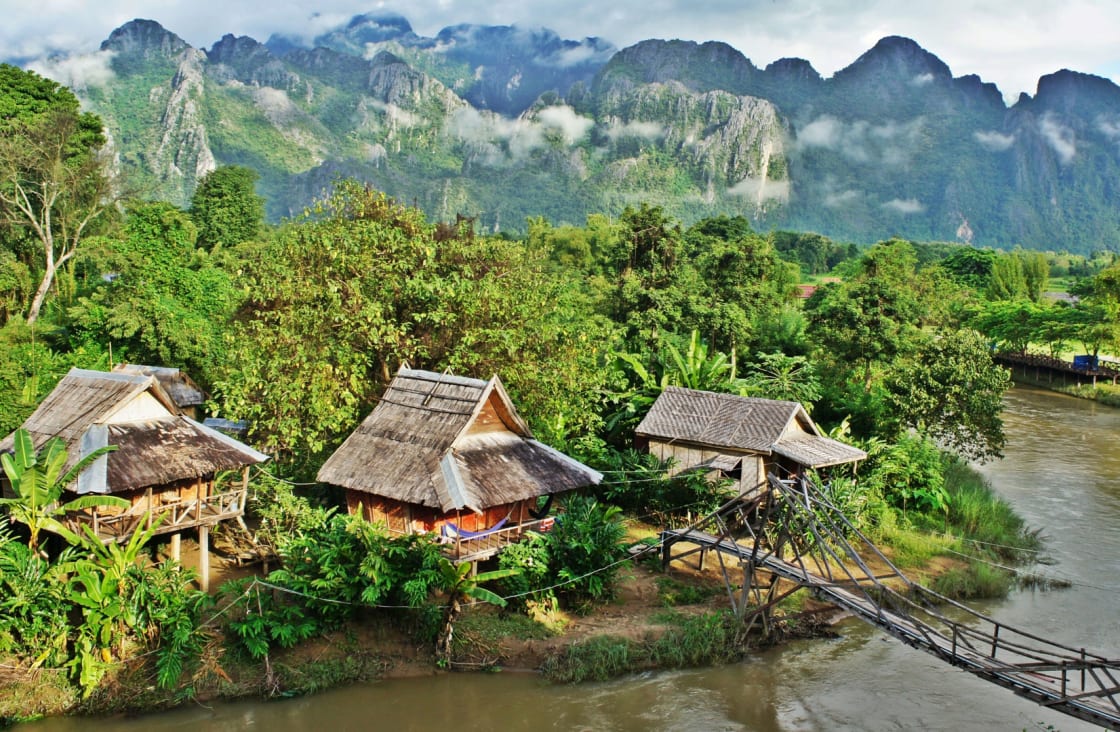
Bokeo is a peaceful rural province in northwestern Laos. Rich in natural resources with hilly mountains, tropical forest and farmland, Bokeo is also home to around 30 ethnic groups who still preserve their traditional lifestyles and culture. Huay Xai, the capital provincial of Bokeo, sits on the bank of the Mekong River and has several temples to explore.
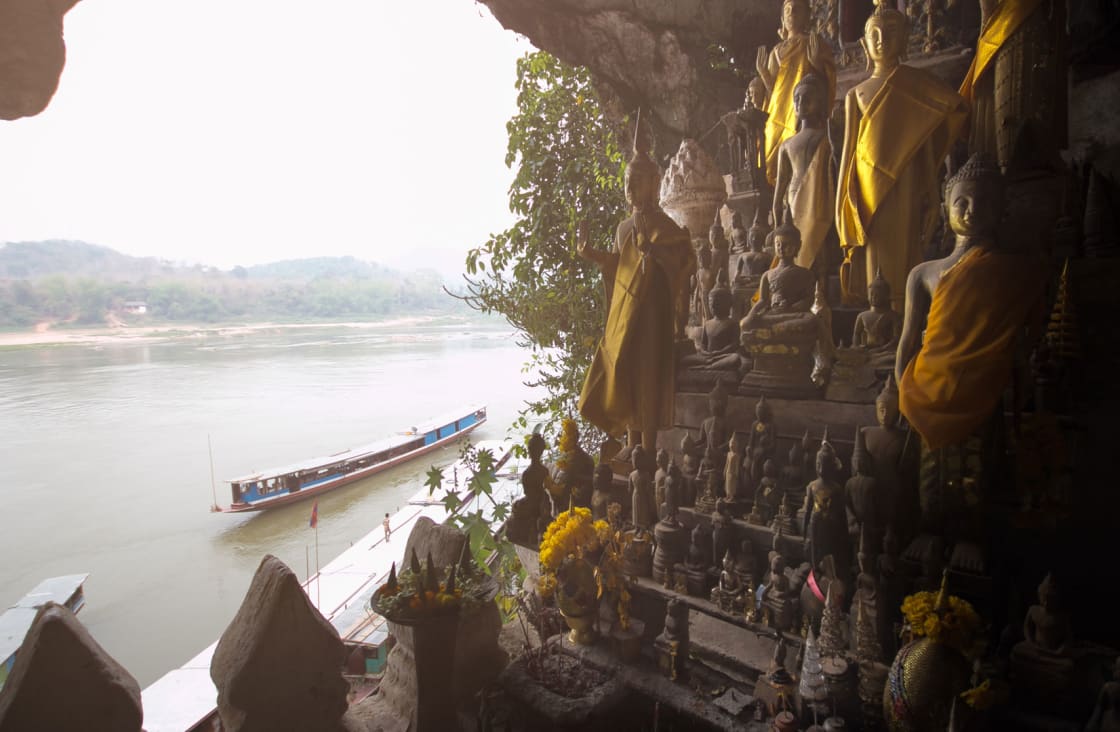
Where the Nam Ou River and the Mekong River meet at Ban Pak Ou, you will find two famous caves in the limestone cliff, which are crammed with a myriad of Buddha images. In the lower cave, a photogenic group of Buddhas is silhouetted against the stunning riverine backdrop. The upper cave is a five-minute climb up steps (you’ll need a torch), 160 feet into the rock face. You can buy boat tickets from the longboat office in Luang Prabang.
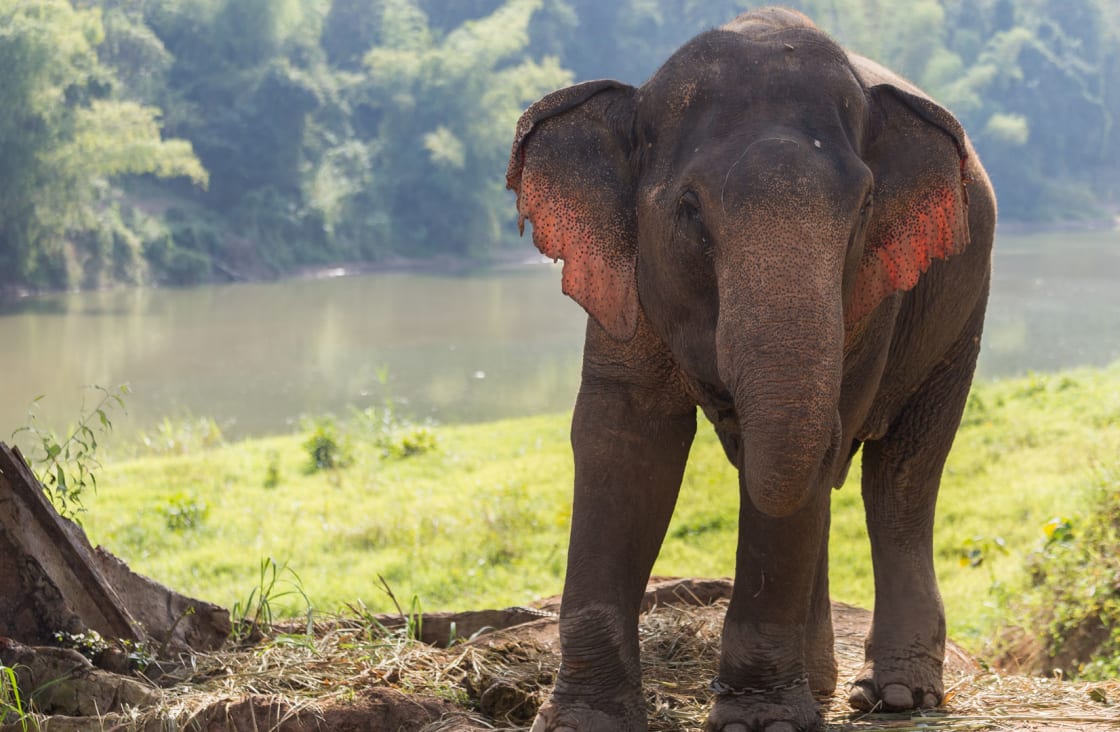
The Elephant Village Sanctuary, situated in a hidden valley 10 miles from Luang Prabang is an educational facility dedicated to the rehabilitation and protection of Asian elephants in Laos. Here, the Luang Prabang Elephant Project supports elephants and humans to achieve a better life through tourism.
The facility provides employment to villagers, and the elephants have been freed from brutal logging work and are provided with a comfortable retirement and a healthier future. A visit to the Elephant Village allows you to interact with these beautiful creatures. You can try your hand at being a mahout, allowing you to care for and bathe with the elephants; it is one of the most comprehensive, hands-on experiences in the country.
While Rainforest Cruises aim to provide accurate and up-to-date information, we make no representations as to the accuracy or completeness of any information herein or found by following any link on this site. Rainforest Cruises cannot and will not accept responsibility for any omissions or inaccuracies, or for any consequences arising therefrom, including any losses, injuries, or damages resulting from the display or use of this information.




